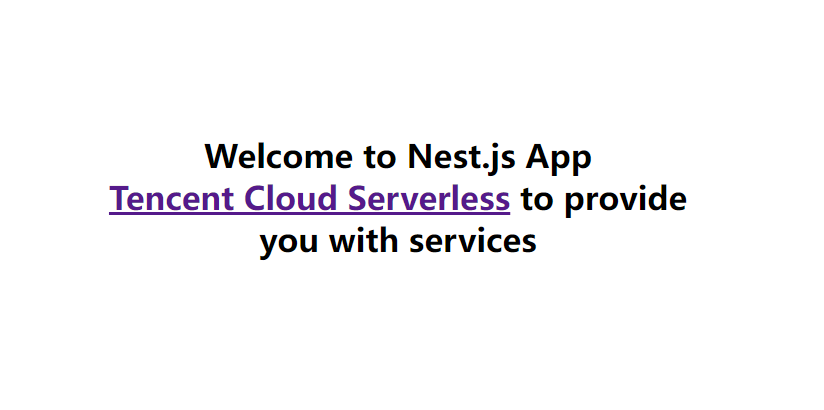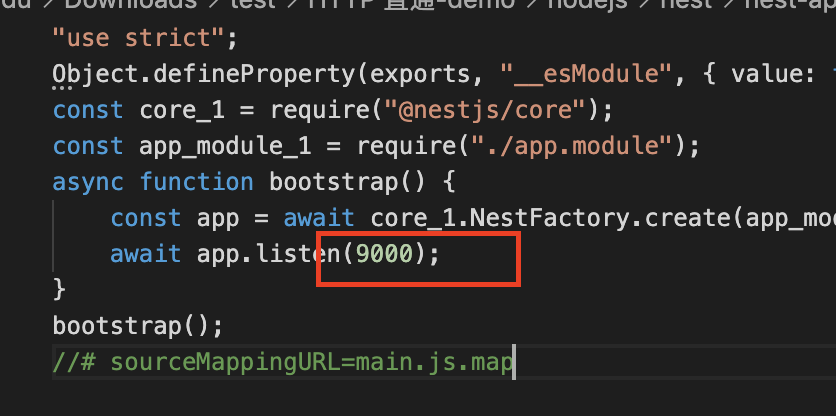Serverless Cloud Function
- Release Notes and Announcements
- Product Introduction
- Purchase Guide
- Billable Items and Billing Modes
- SCF Pricing
- User Guide
- Quota Management
- Managing Functions
- Web Function Management
- Concurrence Management
- Trigger Management
- A Custom Domain Name
- Version Management
- Permission Management
- Managing Monitors and Alarms
- Network Configuration
- Layer Management
- Execution Configuration
- Extended Storage Management
- Triggers
- API Gateway Trigger
- Websocket
- COS Trigger
- CLS Trigger
- Timer Trigger
- CKafka Trigger
- Apache Kafka Trigger
- Development Guide
- Developer Tools
- Serverless Cloud Framework
- Calling SDK Across Functions
- Third-Party Tools
- Malagu Framework
- Code Development
- Node.js
- Java
- Custom Runtime
- Deploying Image as Function
- Web Framework Development
- Practical Tutorial
- Business Development
- ServerlessFramework Practices
- API Gateway
- Using API Gateway to Provide API Service
- TRTC Practices
- COS Practices
- Acquire Image on COS and Create a Thumbnail
- MapReduce Method that Uses WordCount as an Example
- CKafka Practice
- CLS
- CLB Practice
- MPS
- Scheduled Task
- Video Processing
- Success Stories
- Online Video Industry
- API Documentation
- Making API Requests
- Function APIs
- Layer Management APIs
- Async Event Management APIs
- Other APIs
- FAQs
- Related Agreement
Quickly Deploying Nest.js Framework
Last updated: 2023-02-02 11:00:57
Overview
This document describes how to quickly deploy a local Nest.js project to the cloud through an HTTP-triggered function.
Note:This document mainly describes how to deploy in the console. You can also complete the deployment on the command line. For more information, see Deploying Framework on Command Line.
Prerequisites
Before using SCF, you need to sign up for a Tencent Cloud account and complete identity verification first.
Directions
Template deployment: Quick deployment of Nest.js project
- Log in to the SCF console and click Functions on the left sidebar.
- Select the region and namespace where to create a function at the top of the page and click Create to enter the function creation process.
- Select Template, enter
nestin the search box to filter function templates, select the Nest template, and click Next. - On the Create page, you can view and modify the specific configuration information of the template project.
- Click Complete. After creating the HTTP-triggered function, you can view its basic information on the Function management page.
- Click Trigger management on the left to view the access path and access your deployed Nest.js project as shown below:

- Click the access path URL to access the Nest.js project as shown below:

Custom deployment: Quick migration of local project to cloud
Prerequisites
The Node.js runtime environment has been installed locally.
Local development
Refer to First steps to initialize your Nest.js project:
npm i -g @nestjs/cli nest new nest-appIn the root directory, run the following command to directly start the service locally.
cd nest-app && npm run startVisit
http://localhost:3000in a browser, and you can access the sample Nest.js project locally as shown below:
Deployment in cloud
You need to make simple modifications to the initialized project, so that the project can be quickly deployed through an HTTP-triggered function. The project transformation here is usually divided into the following two steps:
- Add the
scf_bootstrapbootstrap file. - Change the listening address and port to
0.0.0.0:9000.
The detailed directions are as follows:
- Modify the bootstrap file
./dist/main.jsto change the listening port to9000as shown below:
- Create the
scf_bootstrapbootstrap file in the project root directory and add the following content to it (which is used to start services):#!/bin/bash
SERVERLESS=1 /var/lang/node12/bin/node ./dist/main.jsNote- Here is only a sample bootstrap file. Adjust the specific operations according to your actual business scenario.
- The sample uses the standard node environment path of SCF. When debugging locally, you need to change it to your local path.
- After the creation is completed, you need to run the following command to modify the executable permission of the file. By default, the permission
777or755is required for it to start normally. Below is the sample code:chmod 777 scf_bootstrap - Log in to the SCF console and click Functions on the left sidebar.
- Select the region where to create a function at the top of the page and click Create to enter the function creation process.
- Select Create from scratch and configure the options as prompted:
- Function type: Select HTTP-triggered function.
- Function name: Enter the name of your function.
- Region: Enter your function deployment region, which is Guangzhou by default.
- Runtime environment: Select Nodejs 12.16.
- Submitting method: Select Local folder and upload your local project.
- Function codes: Select the specific local folder where the function code is.
- Click Complete.
Development management
After the deployment is completed, you can quickly access and test your web service in the SCF console and try out various features of SCF, such as layer binding and log management. In this way, you can enjoy the advantages of low cost and flexible scaling brought by the serverless architecture.
Was this page helpful?
You can also Contact Sales or Submit a Ticket for help.
Yes
No

